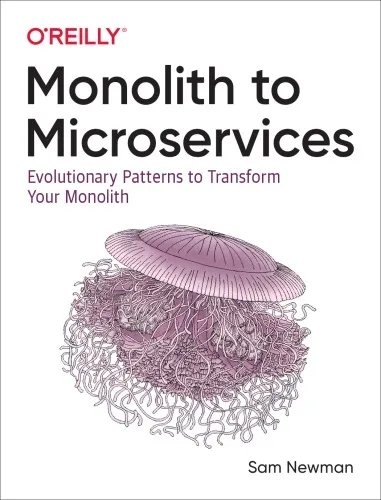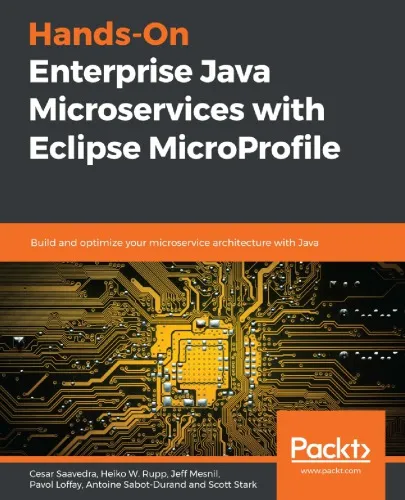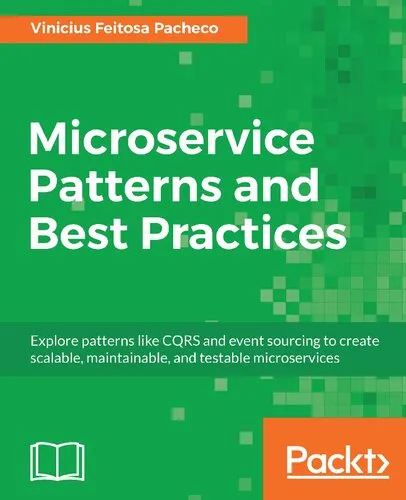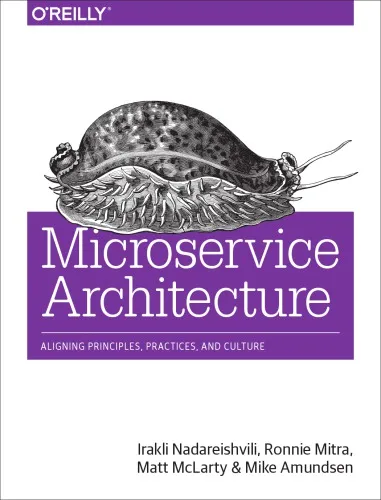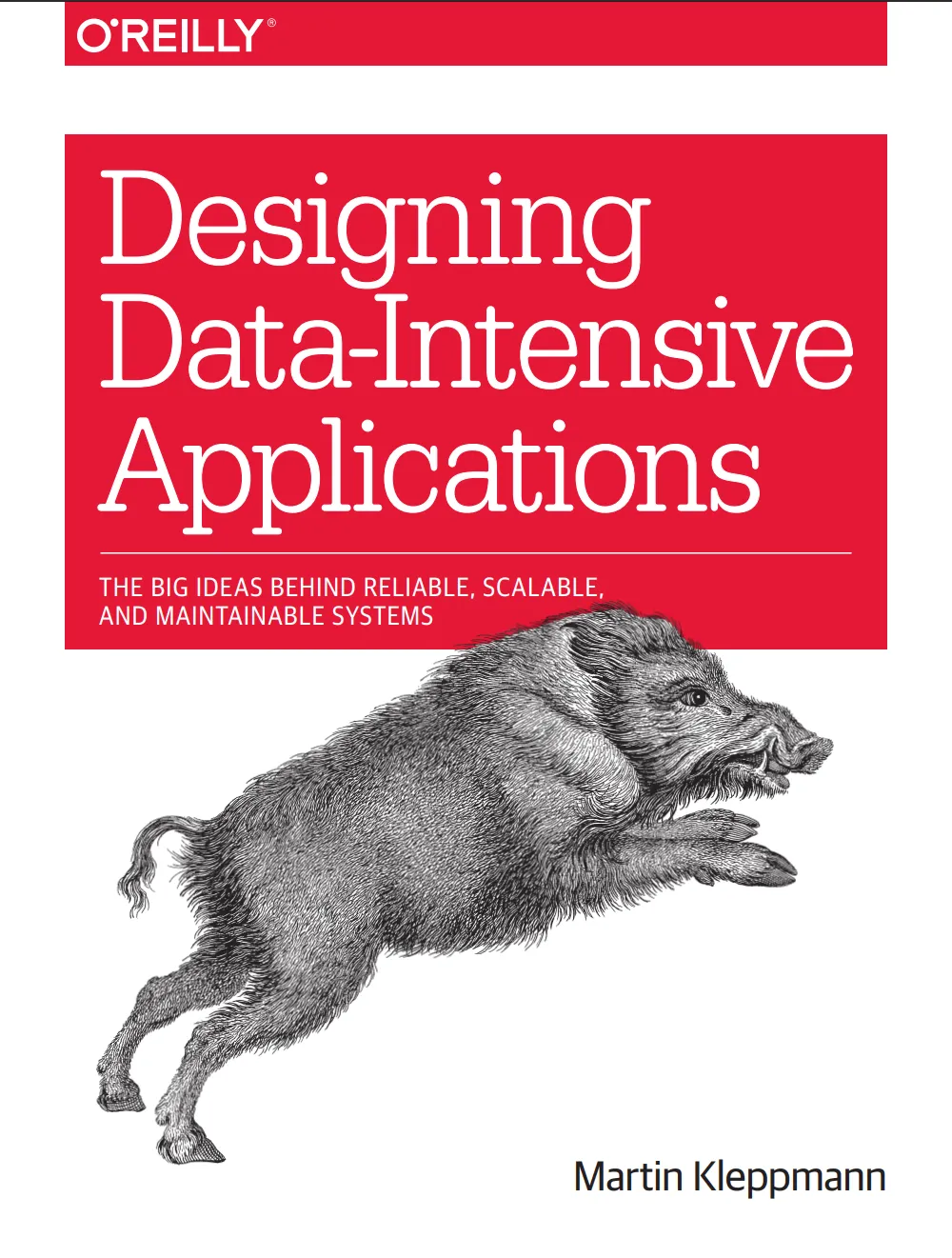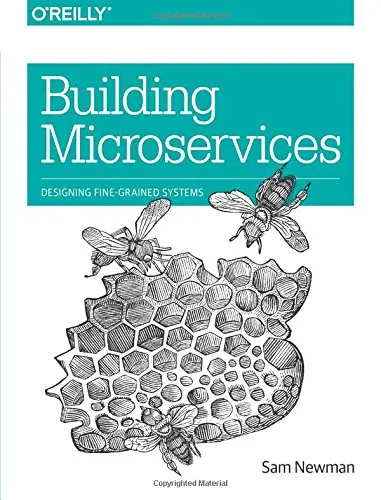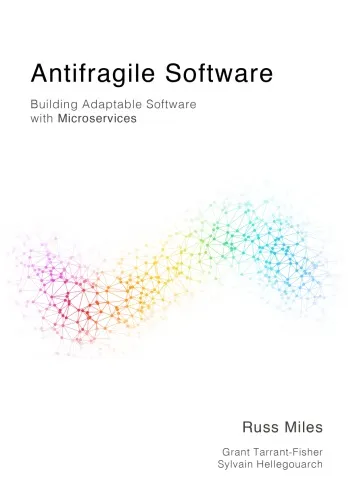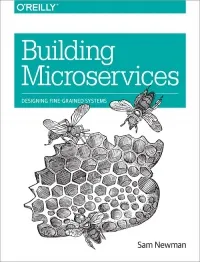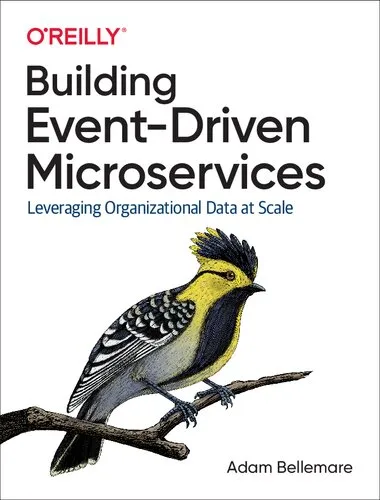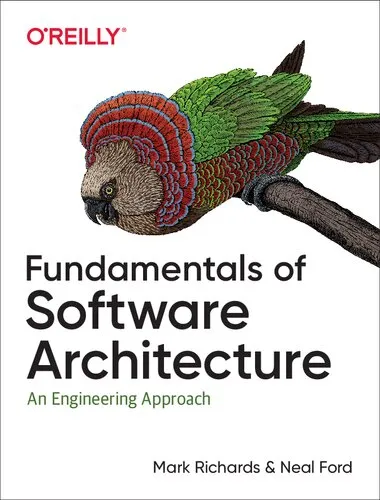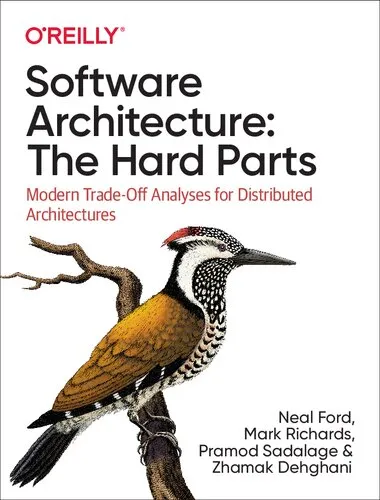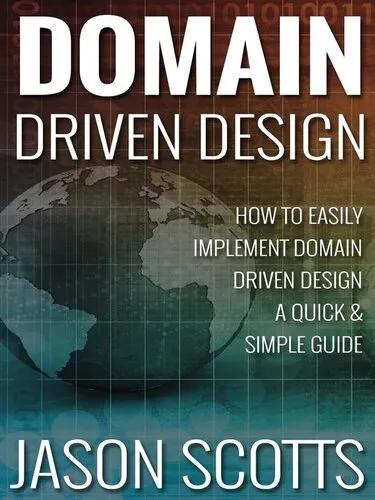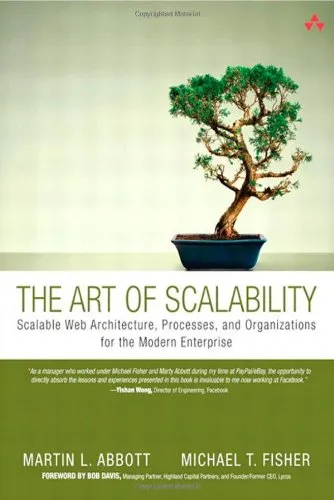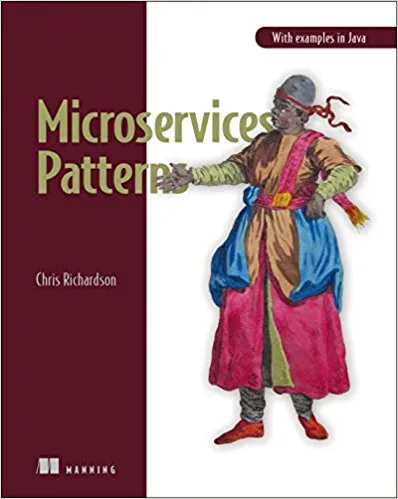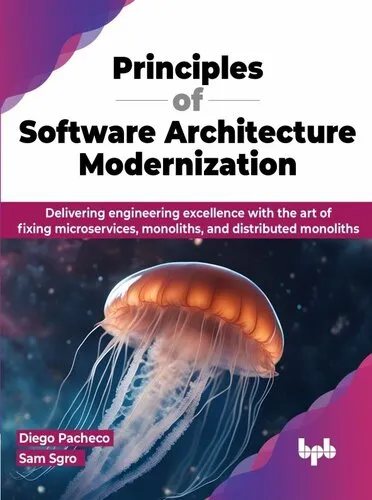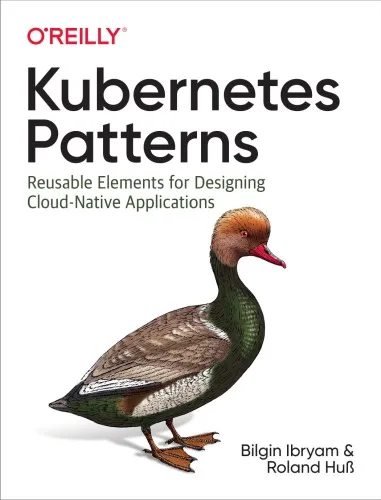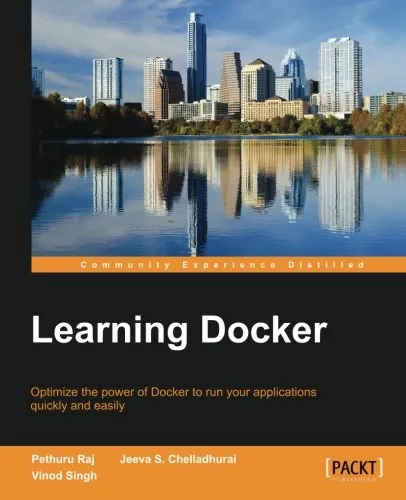Monolith to Microservices: Evolutionary Patterns to Transform Your Monolith
4.3
بر اساس نظر کاربران

شما میتونید سوالاتتون در باره کتاب رو از هوش مصنوعیش بعد از ورود بپرسید
هر دانلود یا پرسش از هوش مصنوعی 2 امتیاز لازم دارد، برای بدست آوردن امتیاز رایگان، به صفحه ی راهنمای امتیازات سر بزنید و یک سری کار ارزشمند انجام بدینکتاب های مرتبط:
Persian Summary
معرفی کتاب
کتاب "Monolith to Microservices: Evolutionary Patterns to Transform Your Monolith" نوشته سم نیومن، یک راهنمای جامع و دقیق برای تحول سیستمهای نرمافزاری از معماری مونوولیتیک به معماری Microservices است. این کتاب به خوانندگان کمک میکند تا به طور گام به گام و با استفاده از الگوهای تحولی، ساختار نرمافزارهای خود را بهبود بخشند و همراه با بازدهی و مقیاسپذیری، چالشهای روزمره توسعه نرمافزارهای بزرگ را کاهش دهند.
خلاصه جامع کتاب
این کتاب به چند بخش اصلی تقسیم میشود که هر کدام به بررسی جنبههای مختلف جایگزینی معماریهای مونوولیتیک با Microservices میپردازد. سم نیومن با استفاده از تجربه گسترده خود در زمینه مهندسی نرمافزار و سیستمهای مقیاسپذیر، به معرفی مفاهیمی مانند انکپسولاسیون سرویس، مدیریت دادههای توزیع شده، و الگوهای طراحی داخلی Microservices میپردازد. او همچنین راهنماییهای عملی برای شناسایی و کاهش خطرات احتمالی در فرایند تحول ارائه میدهد، که میتواند به تیمهای توسعه کمک کند تا مسیر تحولات خود را به درستی مدیریت کنند.
نکات کلیدی
- شناخت الگوهای تحولی برای مهاجرت به Microservices
- ارزیابی سیستمهای مونوولیتیک و تعیین زمان و نحوه انتقال به Microservices
- رویکردهایی برای مدیریت تغییرات در ساختار کد و معماری
- تمرکز بر معماری و طراحی سرویسگرا (SOA)
- استراتژیهای ارزیابی عملکرد و مقیاسپذیری
نقلقولهای معروف از کتاب
"تبدیل یک سیستم مونوولیتیک به Microservices بدون درک درست از سیستم موجود، مانند تلاش برای تعویض چرخ در حالی که ماشین در حال حرکت است، میباشد."
"Microservices به شما این امکان را میدهد که نوآوری کنید و بخاطر امکان انجام سریع آزمایشات، به سرعت شکست خورده و درس بگیرید."
چرا این کتاب مهم است
کتاب "Monolith to Microservices" یکی از مهمترین منابع برای برنامهنویسان و معماران نرمافزار است که به دنبال تحول دیجیتال و مقیاسپذیری سیستمهای نرمافزاری خود هستند. با تغییر سریع فناوری و نیاز به انعطافپذیری بیشتر در توسعه نرمافزار، درک معماری Microservices و نحوه انتقال صحیح به آن اهمیت حیاتی دارد. سم نیومن با سبک نوشتاری روان و مستدل، این درک را برای خوانندگان فراهم میکند و کمک میکند تا از اشتباهات پرهزینه جلوگیری کنند.
Introduction
Welcome to a transformative journey where monolithic architectures evolve into a nimble set of microservices. 'Monolith to Microservices: Evolutionary Patterns to Transform Your Monolith' is an insightful guide authored by Sam Newman that empowers developers and organizations to modernize their monolithic systems effectively. This book provides a framework of strategies and patterns that make the daunting process of transforming a monolith into microservices manageable and scalable.
Detailed Summary of the Book
In 'Monolith to Microservices', Sam Newman provides a comprehensive blueprint to ease the transition from a monolithic architecture to microservices. Rather than advocating for an abrupt shift, the book emphasizes an evolutionary approach, applying gradual changes that align with your current system's capabilities and business requirements. The book revolves around various patterns and strategies aimed at facilitating this transformation, each tailored to address specific issues such as scalability, maintainability, and deployment efficiency.
The book delves into the anatomy of monoliths, examining their strengths and limitations. It then guides readers through identifying the right candidates for microservices, emphasizing the importance of service boundaries, domain-driven design, and a deep understanding of your current architecture. Newman's pragmatic approach includes consideration of organizational culture, team structures, and the vital role of continuous delivery in the success of microservices.
Practical examples and case studies are used to illustrate each transformation pattern, providing readers with real-world context. The book also addresses the challenges faced during and after transitioning to microservices, offering solutions to common pitfalls and advice on how to maintain a successful microservices ecosystem post-transition.
Key Takeaways
- Understand the complexities and benefits of transforming a monolithic system into microservices.
- Apply evolutionary patterns that make the transformation process manageable and non-intrusive.
- Learn the importance of identifying appropriate service boundaries and applying domain-driven design.
- Gain insights into organizational factors that influence successful microservices adoption.
- Implement strategies for maintaining system integrity and performance throughout the transition.
Famous Quotes from the Book
"Migrating from a monolith to microservices is not a one-size-fits-all journey, but rather a nuanced path that requires careful consideration and planning."
"Understanding and defining service boundaries are at the heart of a successful microservices architecture."
"The evolution of your architecture should align with the evolution of your organization."
Why This Book Matters
In a rapidly evolving technological landscape, businesses seek agility, scalability, and efficiency more than ever. 'Monolith to Microservices' provides a timely and valuable resource for organizations and developers tackling the complexities of modernizing legacy systems. Sam Newman's approach is founded on real-world experience and pragmatic advice, equipping readers with the knowledge and tools to make informed decisions throughout their transformation journey.
This book stands out for its emphasis on evolutionary change rather than drastic disruption. This makes it particularly relevant for organizations looking to balance innovation with stability, ensuring that modernization initiatives align with business objectives and technical constraints. With its comprehensive exploration of both technical frameworks and organizational dynamics, 'Monolith to Microservices' is an essential read for anyone vested in the future-proofing of their architectural strategy.
دانلود رایگان مستقیم
شما میتونید سوالاتتون در باره کتاب رو از هوش مصنوعیش بعد از ورود بپرسید
دسترسی به کتابها از طریق پلتفرمهای قانونی و کتابخانههای عمومی نه تنها از حقوق نویسندگان و ناشران حمایت میکند، بلکه به پایداری فرهنگ کتابخوانی نیز کمک میرساند. پیش از دانلود، لحظهای به بررسی این گزینهها فکر کنید.
این کتاب رو در پلتفرم های دیگه ببینید
WorldCat به شما کمک میکنه تا کتاب ها رو در کتابخانه های سراسر دنیا پیدا کنید
امتیازها، نظرات تخصصی و صحبت ها درباره کتاب را در Goodreads ببینید
کتابهای کمیاب یا دست دوم را در AbeBooks پیدا کنید و بخرید
2018
بازدید4.3
امتیاز0
نظر98%
رضایتنظرات:
4.3
بر اساس 0 نظر کاربران
Questions & Answers
Ask questions about this book or help others by answering
No questions yet. Be the first to ask!
